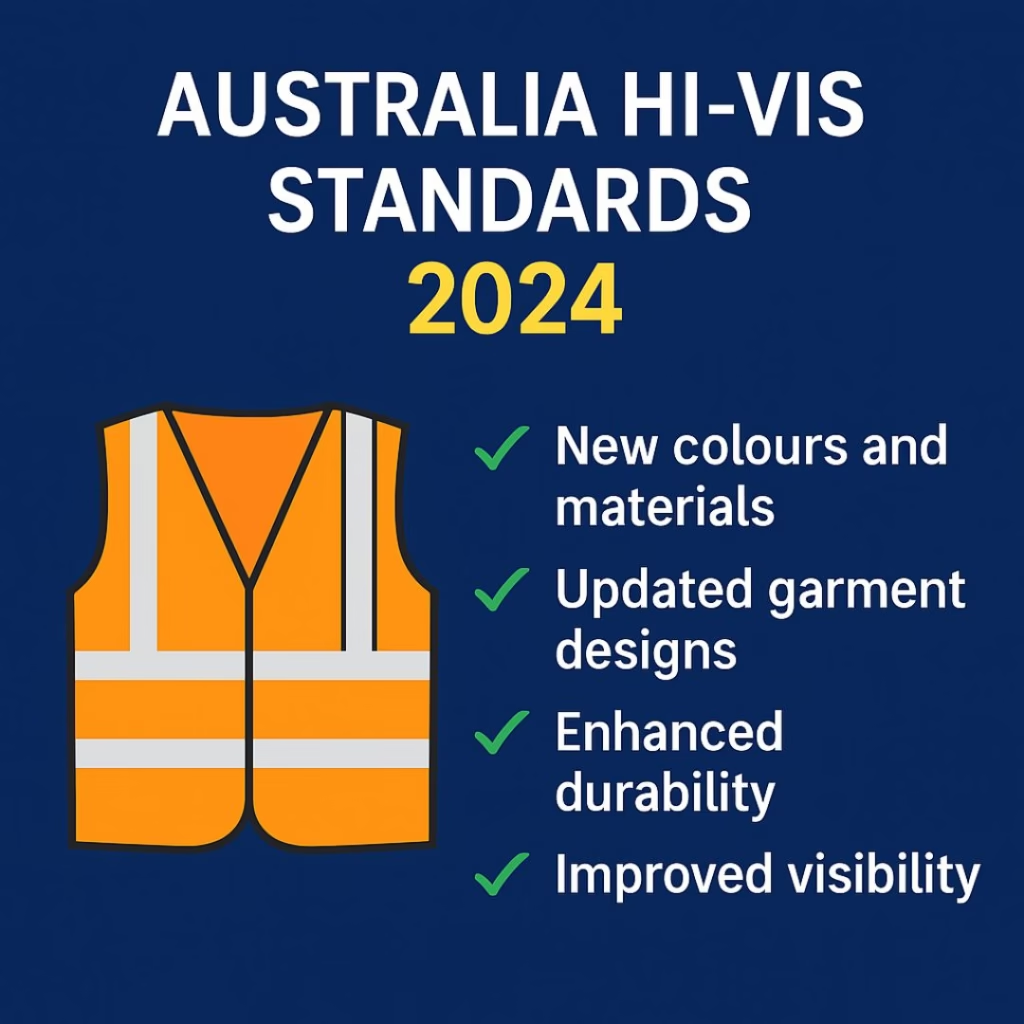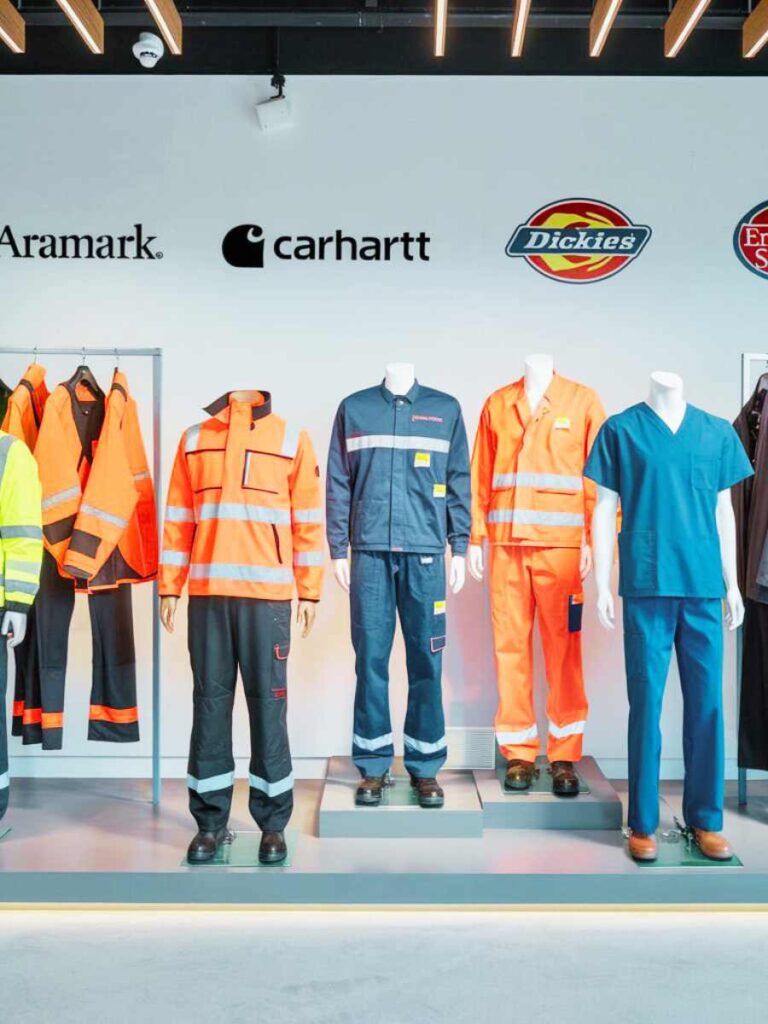The Australia hi-vis standards 2024 have introduced major updates that impact every industry using high-visibility workwear.
From construction and mining to logistics and roadwork, the right hi-vis clothing is essential for keeping workers safe and compliant with national safety laws.
These new updates to Australia hi-vis standards 2024 make visibility gear safer, more durable, and better suited for today’s diverse work environments.
Let’s explore what’s changed and what every employer and worker needs to know to stay compliant.
Why the Australia Hi-Vis Standards 2024 Matter
Hi-vis workwear is not just about bright colours — it’s a life-saving layer of protection.
Under Australia’s Work Health and Safety (WHS) framework, every employer must provide compliant Personal Protective Equipment (PPE), including certified high-visibility clothing.
The Australia hi-vis standards 2024 ensure that garments:
Keep workers visible in low light or high-traffic areas
Reduce accidents and injuries
Meet Australia’s updated compliance requirements
Following these standards is not optional — it’s a legal and moral responsibility to protect workers on site.
Overview of the Australia Hi-Vis Standards 2024
The Australia hi-vis standards 2024 are made up of two key parts:
AS/NZS 1906.4:2023 – Focuses on the materials used in hi-vis clothing.
AS 4602.1:2024 – Focuses on garment design and classification.
Together, these standards define what makes a piece of clothing truly “high visibility” and ensure consistent safety across industries.
Material Standard Update – AS/NZS 1906.4:2023
The 2023 material standard update is a key component of the Australia hi-vis standards 2024. It introduces several improvements that increase visibility and performance.
1. New Colours Added
In addition to fluorescent yellow and orange, pink and green are now approved colours.
These options make it easier to maintain contrast and visibility across different work environments.
2. New Fabric Classes Introduced
Two new categories now exist under Australia hi-vis standards 2024:
NF(W): Non-fluorescent wet-weather fabrics
SP: Specialist performance materials
These new classes make room for innovative fabrics that perform better in rain, low light, or specific industries.
3. Improved Durability Standards
The updated standards require testing for:
UV resistance
Washing performance
Abrasion durability
This ensures hi-vis garments stay bright, reflective, and compliant longer. A major advantage for employers managing large fleets of uniforms.
4. Reflective Tape Enhancements
Reflective materials, including chequered and heat-applied tapes, now undergo stricter testing.
This improvement supports the Australia hi-vis standards 2024 goal of ensuring all reflective components meet the same level of safety and visibility.

Garment Standard Overhaul – AS 4602.1:2024
The Australia hi-vis standards 2024 also update how garments are designed, categorized, and worn.
1. New Classification Levels
Garments are still divided into Day (Class D), Night (Class N), and Day/Night (Class D/N) — but now include new levels that indicate how much visibility coverage a garment provides.
This gives employers a more precise way to match the right hi-vis clothing to specific job risks.
2. Risk-Specific Design Approach
Not every job has the same visibility challenges. The Australia hi-vis standards 2024 introduce a risk-based design system that ensures garments fit the environment — whether working near moving vehicles, in tunnels, or under bright sunlight.
Benefits of the Australia Hi-Vis Standards 2024
These updates aren’t just technical; they create real, measurable improvements in safety and performance.
For Employers:
Enhanced Safety: Improved classifications reduce risk across different lighting conditions.
More Options: A wider range of colours and fabrics to match brand identity and job needs.
Cost Efficiency: Longer-lasting garments mean fewer replacements and lower overall costs.
Sustainability: Durability reduces waste and supports eco-friendly workwear strategies.
For Workers:
Better Visibility: Improved coverage and reflection in day and night conditions.
More Comfort: Breathable, durable materials improve comfort during long shifts.
Greater Confidence: Knowing your gear meets the Australia hi-vis standards 2024 adds peace of mind.
How Employers Can Stay Compliant with Australia Hi-Vis Standards 2024
To align with the new updates, businesses should take proactive steps now:
1. Audit Current Hi-Vis Gear
Review whether your current stock complies with AS/NZS 1906.4:2023 or AS 4602.1:2024..
2. Update Procurement Policies
Always ask suppliers for compliance certificates.
Verify product tags before purchasing.
3. Train Employees
Educate teams about the new classifications and when to use each type of hi-vis gear.
4. Replace Outdated Garments
Retire any items that no longer meet the updated standard to avoid compliance risks.
Worker Responsibilities Under the New Standards
Workers also play an important role in maintaining safety and compliance with the Australia hi-vis standards 2024.
They should:
Check garment labels for compliance codes
Choose correct visibility types for day, night, or combined use
Follow care instructions to preserve reflective quality
Report damaged gear for replacement
Proper maintenance ensures the gear continues to provide maximum protection.
Final Thoughts
The Australia hi-vis standards 2024 represent a major leap forward in workplace safety.
By refining materials, colours, and garment designs, these updates bring modern textile technology in line with the real-world risks workers face daily.
For employers, the message is clear — audit, update, and train.
For workers, it’s simple — check your gear and wear it right.
Staying compliant with Australia hi-vis standards 2024 isn’t just about following regulations. It’s about keeping people visible, safe, and confident every single day.




